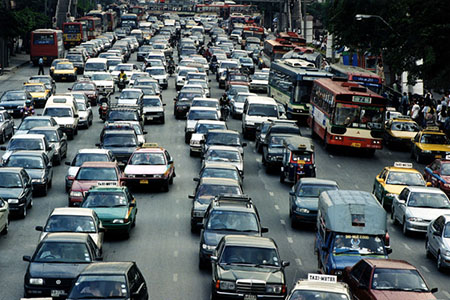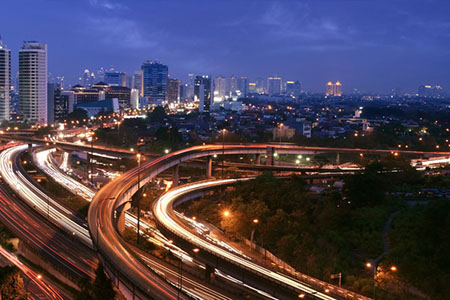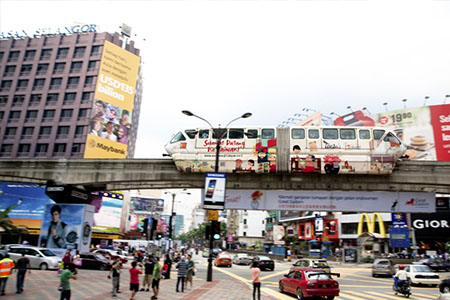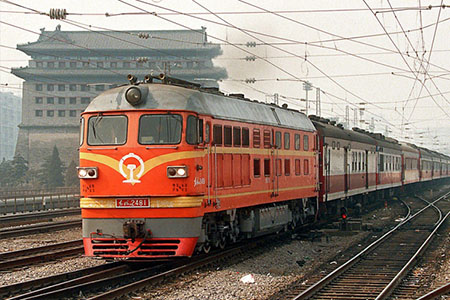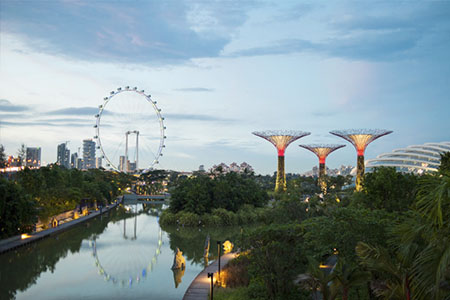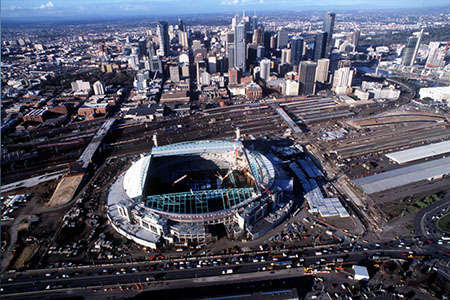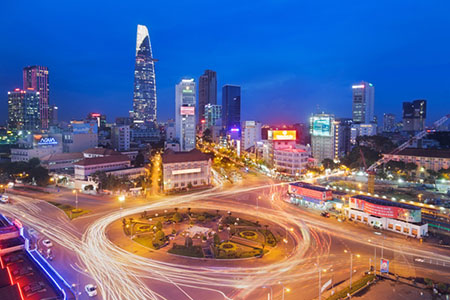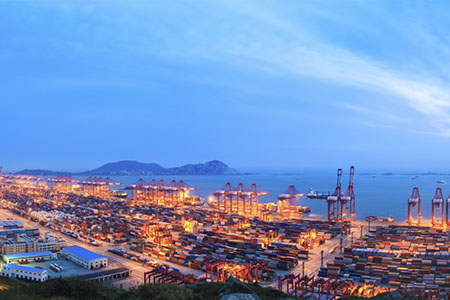Managing the growth of bustling metropolises with booming populations can be a constant challenge. Many of Asiaopolis' cities have addressed these challenges with spectacular infrastructure solutions on the grandest of scales.
Urban density
With a population of 7.29 million people Hong Kong is one of the most densely populated areas in the world. In Mongkok – one of Kowloon's smallest districts - urban density is estimated to be as high as 130,000 people per square kilometre. Population density has been an ongoing problem in Hong Kong. In the nineties Kowloon's famous walled city, an area of only 0.026 square kilometres, was estimated to be home to at least 33,000 people.
Road traffic congestion
Bangkok has 7.5 million registered road vehicles - almost one vehicle for every resident. To manage growing traffic congestion an industrial ring road was constructed to connect the port of Bangkok with Sumat Prakan Province. The industrial ring road spans 13 kilometres with two spectacular cable-stayed bridges crossing the Chao Phraya River twice.
Jakarta is the largest city in the world without a metro or MRT - although the Jakarta MRT project is currently under way - creating a great strain on its road infrastructure. And with a high growth rate of vehicle ownership - 236 cars and 891 motorcycles per day or about 10 percent growth per year, elevated roads have been identified as a potential solution. These elevated roads are speculated to be able reduce traffic density be at least half.
Currently slated to be finished by 2018 the Jakarta Tollroad Development (TRD) project will deliver six elevated toll roads with an exclusive public transportation lane and a connection to the Jakarta Inner Ring Toll Road with a total length of nearly 70km. The toll roads will connect all five of Jakarta's municipalities.
Public transport
Kuala Lumpur is one of the most car-dependent cities in the world, resulting in road congestion and street-level pollution. There is an increasing need for enhanced public transport to alleviate these growing problems. Kuala Lumpur's monorail - part of a light railway system connecting the city – is part of the solution. The Kuala Lumpur Monorail Line is an urban monorail system with 11 stations that runs 8.6 kilometres on two elevated parallel tracks. It connects the Kuala Lumpur Sentral transport hub with the Golden Triangle.
Advances in public transport are required for long-distance travel as well as inner-city travel. The Beijing–Shanghai High-Speed Railway (or Jinghu High-Speed Railway) is a 1,318-kilometre long high-speed railway that connects the Bohai Economic Rim and the Yangtze River Delta - two of China's major economic zones. During peak hours, trains are scheduled every five minutes with an estimated 220,000 passengers expected to use the trains each day. Eighty seven per cent of the railway is elevated, 1140 kilometres. The railway also includes 244 bridges - including the longest bridge in the world, the Danyang–Kunshan Grand Bridge – and 22 tunnels, totaling 16.1 kilometres.
Urban renewal
Occasionally when growing established cities it is necessary to reinvigorate existing urban areas. Long-term sustainable development has always been important in Singapore's growth. Singapore is committed to create a greener, more energy efficient and sustainable city. Jurong Lake is an example of Singapore's commitment to a greener future. The freshwater lake serves as reservoir contributing to the water supply of the country and was formed by the damming of the Sungei Jurong further downstream.
The lake is surrounded by parkland, which serves as a recreational ground for residents. There is also a landscaped sanctuary and a 2.8 kilometre promenade alongside the lake. Singapore has now also erected the Marina Bay sea barrage at the mouth of the Singapore River, creating another massive freshwater storage reserve upstream of the barrier.
Urban renewal
Melbourne's Docklands precinct is an example of urban reclamation. As far back as the 1850s the area was a booming hub of economic activity but the activity died down after the 1960s. In 1991 the renewal of Melbourne's Docklands area commenced, the Docklands would become an addition to the existing CBD offering a world-class waterfront city.
Melbourne's Docklands has already transformed the shape of the city in many significant ways, bringing the city to the water and creating new precincts for living, working and entertaining. The addition of the Docklands increases the land size of Melbourne CBD's by an additional three square kilometres to 6.2 square kilometers.
Urban disparity
Unfortunately where there is mass-urbanisation there is also the formation of urban slums. In Metro Manila this is particularly apparent, with over 526 'slum' communities in all cities and municipalities, housing 2.5 million people on vacant private or public lands. In Manila it is not an uncommon urban scene to see slums alongside mansions in affluent residential areas.
Peri-urbanisation
Vietnam has one of the fastest rates of urbanisation in the world with almost half of the country's population expected to be living in cities by 2030. Urban poverty is on the rise in Vietnam with rising numbers of unregistered rural migrants moving to cities but being met with unstable employment and housing. At least 300,000 people live in slums in Ho Chi Minh City alone. The national urban development strategy focuses on these problems and includes actions aimed at:
- decreasing densities in urban cores of large cities and increasing peri-urban densities;
- reducing loss of prime agricultural land resulting from poorly managed peri-urban development;
- relocating polluting factories from inner cities to outer areas;
- stemming squatter settlements and implementing measures to increase the supply of urban housing;
- and improving the provision of urban services, especially water, sanitation, waste management and public transport.
Urban transformation
Shanghai's Yangshan Port is a deep-water port for container ships in Hangzhou Bay, originally a shallow port now transformed into a deep-water port to allow the Port of Shanghai to grow. It allows berths with depths of up to 15 metres to be built and can handle today's largest container ships. The port is built on the islands of Greater and Lesser Yangshan, part of the Zhoushan archipelago, with fill from land reclamation.




